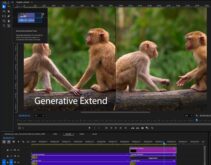In its “2008 Consumer Panel Broadband Survey,” IDC reports that 25% of all participants can successfully download a 1,200Kbps file, while a startling 69% of all respondents can retrieve a 2,400Kbps file. If you’re a media or entertainment company, or any organization for which streaming high-quality video to consumers is mission-critical, one key goal of your distribution mechanism should be to reward the higher bandwidth customers with a better viewing experience.
The low-tech way to achieve this has been used by movie companies for years—simply create different streams at different bandwidths and let the viewer decide which one to view. The downside of this approach is that it doesn’t adapt to changing conditions. For example, imagine Daddy happily streaming upstairs, watching an HD shopping-channel stream, when Mommy decides to watch the last few moments of the ball game. Daddy’s bandwidth instantly gets halved.
As a content distributor, you want Daddy’s experience to gracefully degrade, not stop, which can’t happen when you’re delivering a single stream. Your streaming technology needs the ability to assess changing conditions and request a lower bitrate stream, preferably before Daddy even notices there’s a problem. In addition, it would be great if that technology could adaptively serve a number of devices and connection bandwidths, from mobile phones to the set-top box in your living room.
In a nutshell, this is what adaptive bitrate streaming technologies do—make multiple streams available from the same link, send the right stream to the right viewer when clicked, and adapt to changing conditions behind the scenes.
 Streaming Learning Center Where Streaming Professionals Learn to Excel
Streaming Learning Center Where Streaming Professionals Learn to Excel








